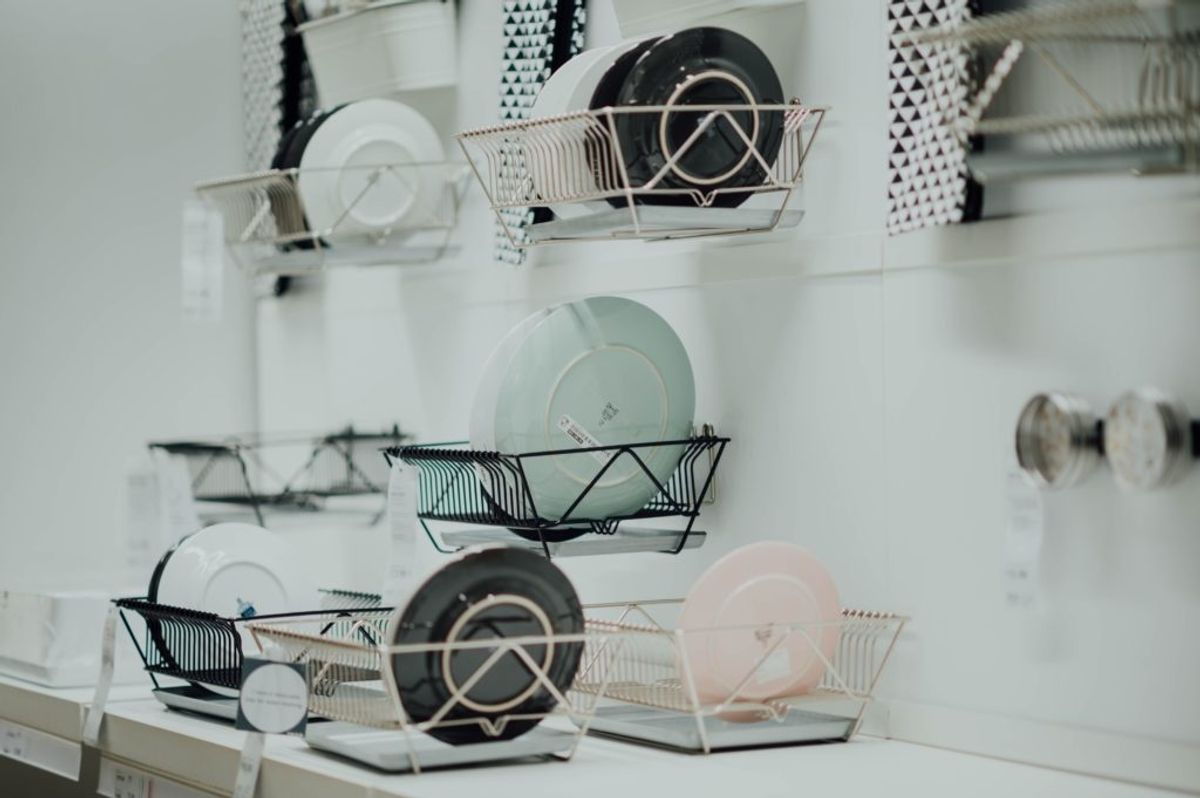Below is an article originally written by Chris Albrecht, Managing Editor of The Spoon, and published on February 27, 2019. The CEO of PowerToFly Partner Dishcraft Robotics is interviewed in this article. Go to Dishcraft's page on PowerToFly to see their open positions and learn more.
Robots that cook burgers and bowl foods in restaurants may grab all the headlines, but there are actually plenty of opportunities throughout commercial kitchens for automation. Opportunities that robotics startup, Dishcraft, is looking to fill.
Linda Pouliot, Founder and CEO of Dishcraft will be providing a glimpse into the future of commercial kitchen robots when she speaks at our upcoming ArticulATE conference in San Francisco on April 16. But first, we did an email Q&A with Pouliot (edited for formatting) to get her views on the types of kitchen work robots are good at, misconceptions people have about them, and what restaurant owners need to think before they implement robots.
THE SPOON: We've seen robots cook burgers and fry up food, what are the other opportunities for robots in commercial kitchens?
POULIOT: Robots can be employed in commercial kitchens to take over some of the most repetitive, high-volume and dangerous, yet necessary tasks.
I know many people are fearful that automation may render human labor obsolete, taking away much-needed jobs, but it's important to recognize that smart use of robots in commercial kitchens actually helps women and men who make up the kitchen staff. It prevents them from having to undertake the most dangerous of kitchen tasks — and keep in mind, there are a lot of possibilities for injury in a home kitchen, let alone a commercial one! — and frees them to perform more high-value tasks. The bottom line is that thoughtful use of robots in commercial kitchens can empower human labor to have more meaningful work experiences.
That said, there are a number of opportunities where robots can be employed in this fashion, including:
Prep work, especially for produce — a high-volume task that requires ingredients to be at their freshest while also taking up valuable real estate in a kitchen. Automating chopping, dicing, slicing, and julienning produce, a fairly benign, repetitive yet tedious task, will take away the potential for injury, freeing up humans to devote their time to more creative, skills-intensive and likely more rewarding work while helping to eliminate the numbers of cuts, nicks, scrapes, and tears hands and fingers sustain during a normal meal service – how many of us have sliced a digit in addition to a tomato or onion?!
Transporting food, whether that means bringing food to diners (the work of bussers) or in the back of the house to bring ingredients from the pantry (or wares) to chefs for cooking or plating. This is fairly straightforward, repetitive work where robots can easily step in and free up women and men from the time, wear, and tear of carrying objects (especially heavy ones) to and from.
Pot washing / Warewashing. Because how many of us truly love scrubbing and washing dishes?
You get the idea. For tasks that are repetitive, that put humans in harm's way (whether through a knife or through the weight of shuttling wares to and fro), robots can pitch in and free up their human colleagues to engage in more meaningful tasks and responsibilities. Other functions where robots can readily step in include:
- Scrapping
- Packaging (boxing up to go containers)
- Napkin folding
- Cleaning of floors, equipment, counters
- Waste management
- Sorting / Stocking of ingredients
Also, they may be able to help solve certain issues or queries that confront the industry, such as: could you alleviate the safety issues that grease traps pose to humans with robots?
What factors need to be considered when designing robots that will work alongside people in a kitchen environment?
This is a great question. Some of the key considerations I keep in mind when designing robots who will work complimentarily with humans are:
Safety. If we're going to deploy robots and automate specific tasks within commercial kitchens, first and foremost let it be in ways that help to safeguard the health of women and men.
The level of creativity and sensitivity and human interaction needed. For example, robots can't taste food, so for fine dining, this is a task better left to a human chef as he/she can adjust spices according to the characteristics of the ingredients that day.
How to employ robots to improve the kitchen environment. There are certain necessary tasks a kitchen must perform constantly and to high standards, especially if it involves sanitation. If there are ways that robots can take over these repetitive tasks and ensure a consistent, high standard, why shouldn't we automate that function and liberate human labor to perform more intricate, human-sensitive work like tasting, seasoning, or interacting with customers?
What are the noise, heat, and humidity factors in the equation? For example, electronics in a wet environment is a tough proposition for obvious reasons. When confronted with a problem where I'm considering whether employing a technology can provide a solution, I have to factor in certain environmental realities that even the best robotic solution cannot overcome. (Kind of like contemplating whether you could send the Wicked Witch of the West to steal Dorothy's ruby red slippers in the midst of a monsoon and expect her to return intact.)
Will it require completely changing a process / providing new training or a new SOP? For example, what is the level of the staff around the robot, and how much kitchen labor is Spanish-speaking? If the answer is "most" or "a lot," does the robot UX need to communicate in more than one language, and if so, how?
Regulatory requirements. Especially those related to health and sanitation. For example, is robot easy to wipe down? This is probably one of the last things most people might think of when contemplating how robots could help enhance and empower a commercial kitchen, but it's one of the first things the Department of Health will focus on!
What does a commercial kitchen manager need to know as they consider adding robots to their operations?
In order for a commercial kitchen manager to smartly deploy a robot (or robots) to their operations and reap its rewards, that individual has to factor in several considerations.
- First, and most importantly, whether they feel that they're up for the challenge of introducing a robot to their operations. As discussed, there is a multitude of ways that robots can be wonderfully beneficial to commercial kitchens, working with human labor and freeing women and men to have more meaningful work experiences. But at the end of the day, if the manager isn't open to introducing a new technology to help address the issues their kitchen faces, then it will be a hard, uphill battle.
- Costs are also something that the manager needs to bear in mind.
- Another key question is: where can a robot provide the most value to the operations? The answer will differ from one kitchen to another, based on several variables. But a key is to identify where the greatest need and greatest impacts are.
- How reliable is the robot? It goes without saying that while it's wonderful to install a robot to help improve your kitchen operations, if it breaks down, constantly stalls, and is generally unreliable, it will be more headache than help.
- How easy is it to interact with it? Change parts? Clean it? How often does it need servicing? Again, this addresses the issue of ease of operations. There's always a learning curve when you introduce new technology, practices, or ideas to any business operation and often those kinks are ironed out with training and getting used to that hardware being an integral part of your operations. But if you invest in a technology that's too time-consuming to run and maintain on a regular basis, even after training and the introductory phase of getting used to working with it, is that robot really serving your kitchen's best interests?
- How will it interact with their staff? Will it bump into staff? Is it a cobot? Is it augmenting the operations or can you leave it completely on its own without needing frequent help from humans to operate it.
What's the biggest misconception people have about commercial robots?
Many people, thanks to their exposure to the robots dreamed up by movies or television shows, expect robotic technologies like the Terminator. That helps to explain why there's a lot of misplaced anxiety over robots, as the entertainment industry tends to build them up as big, scary humanoid arms whacking knives around at a fast speed that will be dangerous. That's an image that's a good storytelling device for their plotlines, but it's a terrible relation to reality.
I've also encountered a lot of people who think the advancement and skill level of robots should be better than humans. But, the reality is that it will take a long time to design robots that have the grace and ability of humans. For example, designing a robotic arm that can manipulate a variety of vegetables requires vision, AI and articulation — a combination that is difficult to achieve. Another example is that it is very easy for a human to recognize a glass but a robot has a difficult time perceiving transparency.
What is your favorite robot from fiction?
Hands down, my most favorite fictitious robot is Rosie from the Jetsons. I remember watching that show as a kid and thinking, "Cool!" While her speedy, button-pushing prowess may be way beyond our reality, I am still enthralled by her.




